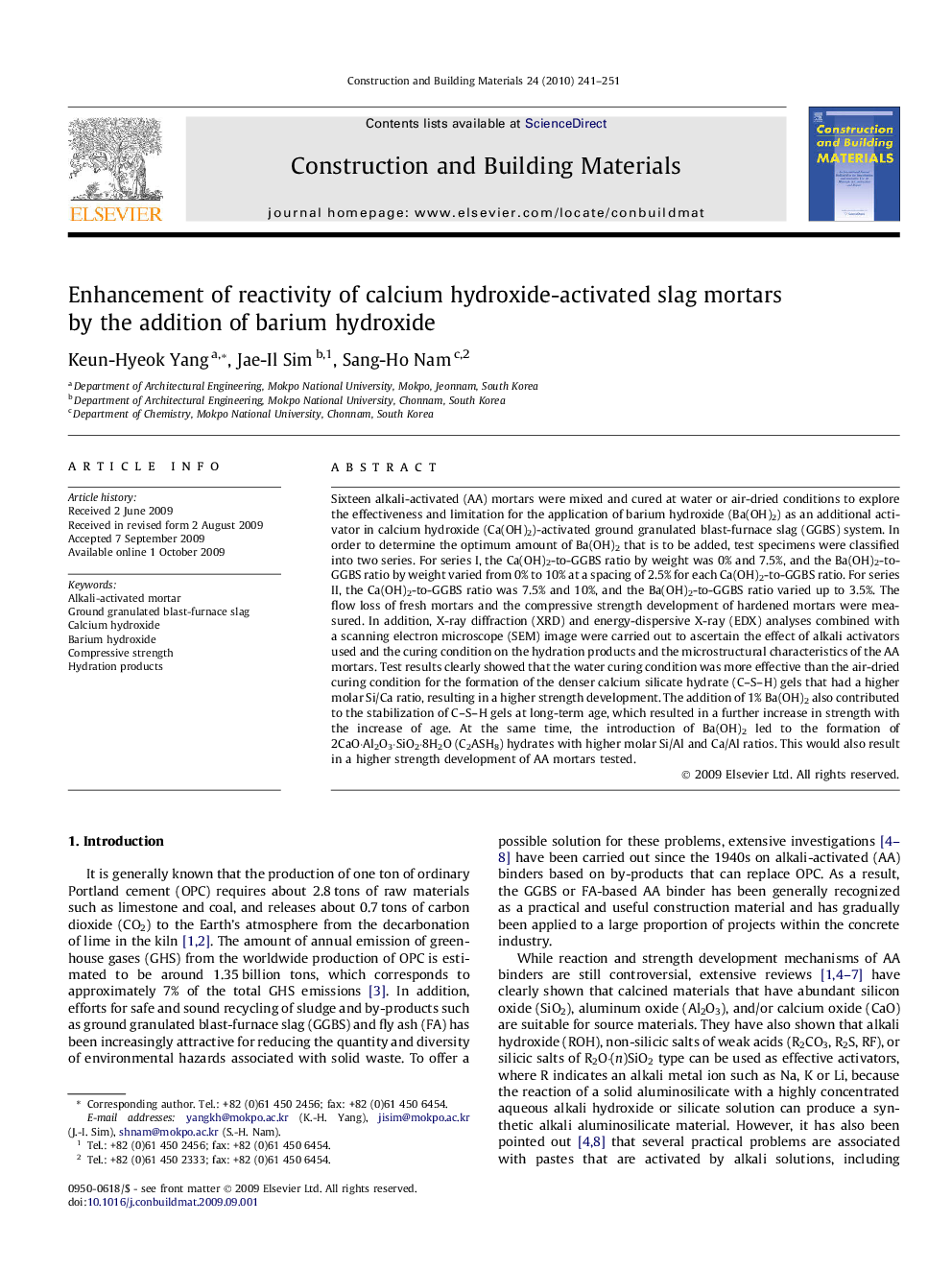| Article ID | Journal | Published Year | Pages | File Type |
|---|---|---|---|---|
| 259766 | Construction and Building Materials | 2010 | 11 Pages |
Sixteen alkali-activated (AA) mortars were mixed and cured at water or air-dried conditions to explore the effectiveness and limitation for the application of barium hydroxide (Ba(OH)2) as an additional activator in calcium hydroxide (Ca(OH)2)-activated ground granulated blast-furnace slag (GGBS) system. In order to determine the optimum amount of Ba(OH)2 that is to be added, test specimens were classified into two series. For series I, the Ca(OH)2-to-GGBS ratio by weight was 0% and 7.5%, and the Ba(OH)2-to-GGBS ratio by weight varied from 0% to 10% at a spacing of 2.5% for each Ca(OH)2-to-GGBS ratio. For series II, the Ca(OH)2-to-GGBS ratio was 7.5% and 10%, and the Ba(OH)2-to-GGBS ratio varied up to 3.5%. The flow loss of fresh mortars and the compressive strength development of hardened mortars were measured. In addition, X-ray diffraction (XRD) and energy-dispersive X-ray (EDX) analyses combined with a scanning electron microscope (SEM) image were carried out to ascertain the effect of alkali activators used and the curing condition on the hydration products and the microstructural characteristics of the AA mortars. Test results clearly showed that the water curing condition was more effective than the air-dried curing condition for the formation of the denser calcium silicate hydrate (C–S–H) gels that had a higher molar Si/Ca ratio, resulting in a higher strength development. The addition of 1% Ba(OH)2 also contributed to the stabilization of C–S–H gels at long-term age, which resulted in a further increase in strength with the increase of age. At the same time, the introduction of Ba(OH)2 led to the formation of 2CaO·Al2O3·SiO2·8H2O (C2ASH8) hydrates with higher molar Si/Al and Ca/Al ratios. This would also result in a higher strength development of AA mortars tested.
